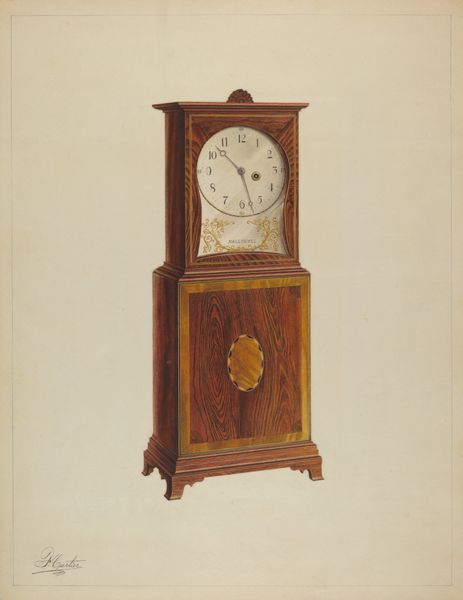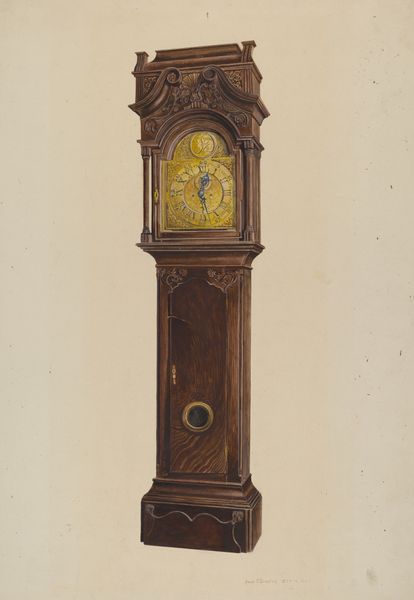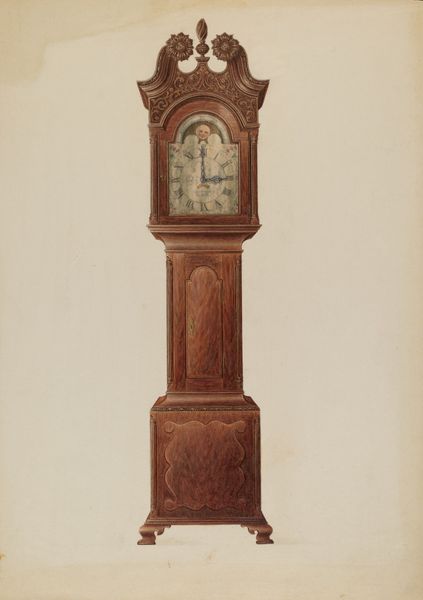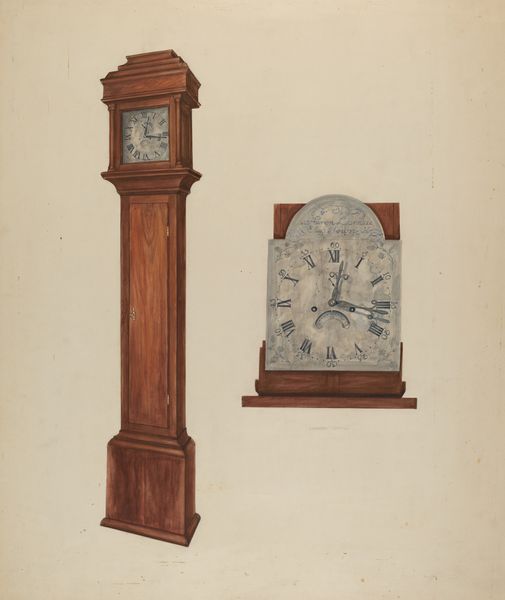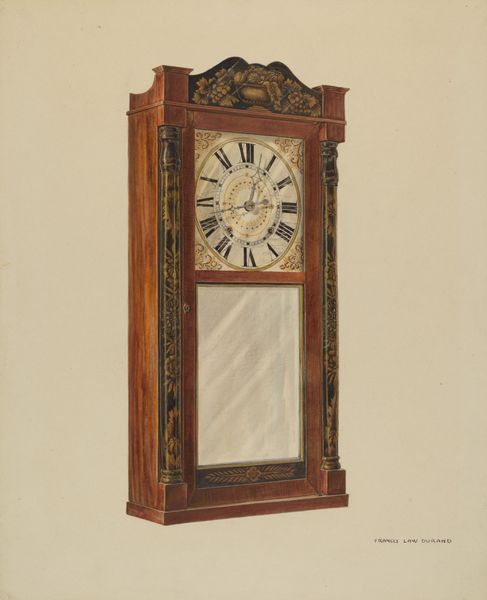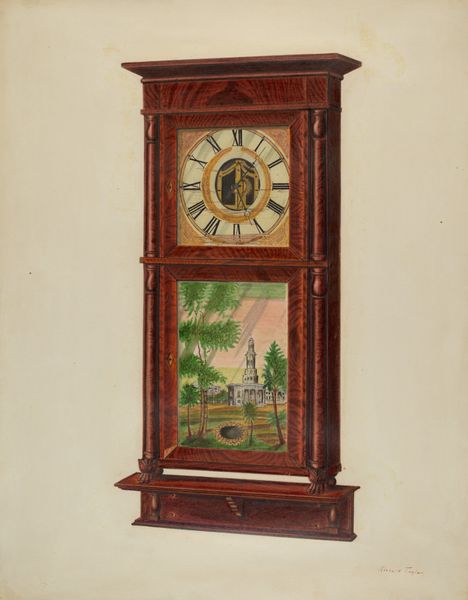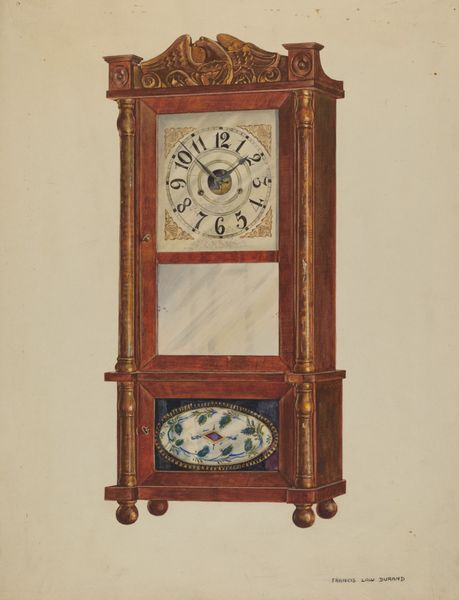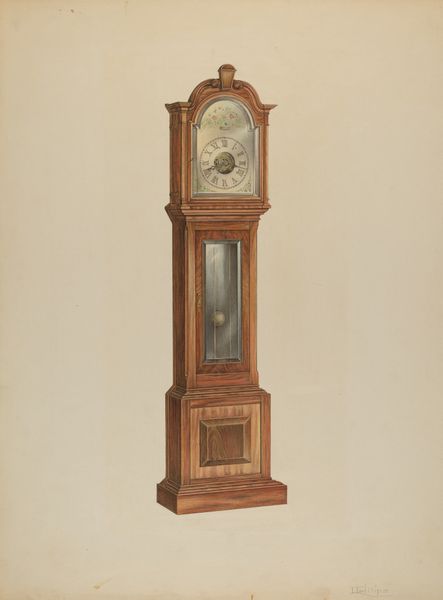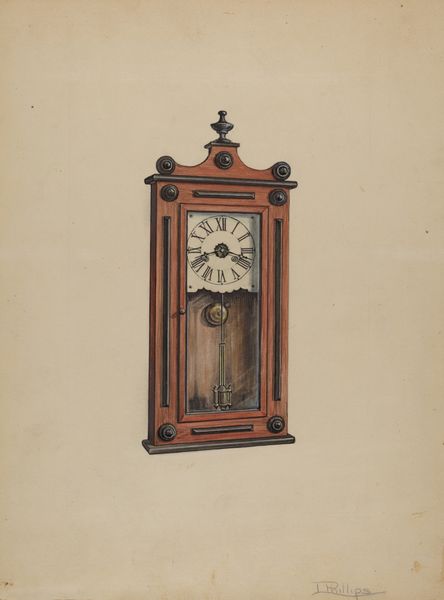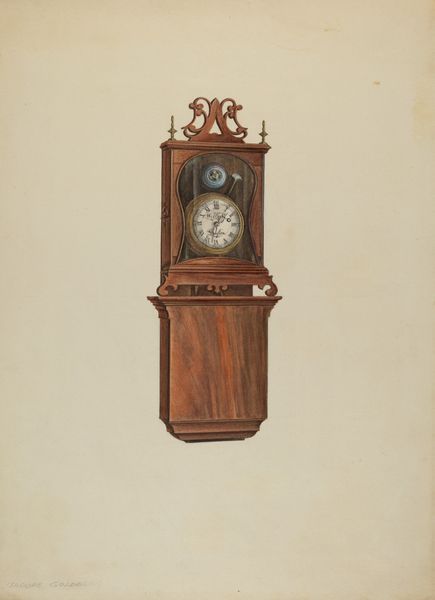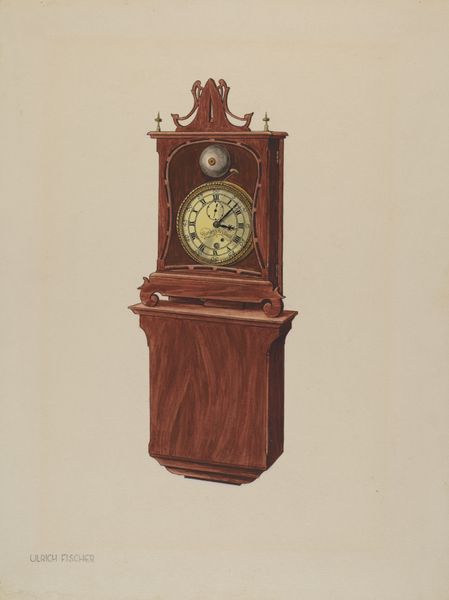
drawing, pencil
#
drawing
#
charcoal drawing
#
oil painting
#
pencil
Dimensions: overall: 42.5 x 30.6 cm (16 3/4 x 12 1/16 in.) Original IAD Object: 25"high; 14 3/4"wide
Copyright: National Gallery of Art: CC0 1.0
Editor: Here we have Raymond Neumann's "Shelf Clock," created around 1940, rendered in pencil and possibly some charcoal. There's an intriguing juxtaposition of a weathered clock face with an animal curled up inside, replacing the pendulum. What catches your eye in terms of the piece's formal qualities? Curator: The primary visual tension arises from the stark contrast between the clock's geometry, the severe lines of its casing and face, and the organic curves of the nestled animal. The drawing’s muted palette further underscores this formal dichotomy. Note how Neumann utilizes texture – the aged, almost decayed quality of the clock contrasts with the smooth curves used for the animal form. Is this interplay effective, in your opinion? Editor: I agree. The clock is precise and clearly defined, but the image inside is softer and less clear. It feels almost like two separate realities existing within one frame, don’t you think? Curator: Precisely. This prompts questions about how representation itself functions. Is the representation within the clock a commentary on temporality, a blurring between natural and mechanical forms? Editor: That makes me think about how the textures, too, add to this contrast. It really does make one wonder about what he wanted us to see. Thank you. Curator: A crucial exercise is attempting to decode visual languages and symbolic strategies artists deploy to signify temporal perceptions and structural realities. I find it has me pondering the material and what meanings one might draw from them.
Comments
No comments
Be the first to comment and join the conversation on the ultimate creative platform.
